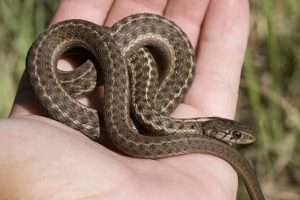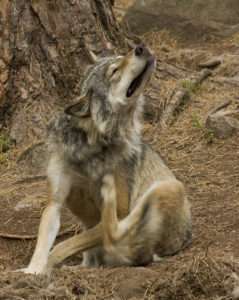 There’s a great discussion over on BlueSky about animal species unfairly seen as villains. Folks are posting pictures of species that we feel get a bad rap (I chose to highlight the gray wolf and snakes.) Ironically, I also had a note in my calendar, placed there months ago, to write about whether there are good or bad animals. So–today’s theme is whether there really are “evil animals”, and what makes them separate from “good animals”.
There’s a great discussion over on BlueSky about animal species unfairly seen as villains. Folks are posting pictures of species that we feel get a bad rap (I chose to highlight the gray wolf and snakes.) Ironically, I also had a note in my calendar, placed there months ago, to write about whether there are good or bad animals. So–today’s theme is whether there really are “evil animals”, and what makes them separate from “good animals”.
Please keep in mind that I am coming from a western perspective as an American of European heritage, and cultural views of various animals vary from species to species and culture to culture. And, of course, individual people within a community may disagree. But let’s stick with general trends in western viewpoints. Also, I am not going to wade into the issue of invasive species and whether they are “good” or “bad” from a moral sense, though I did get into clarifying what makes a species invasive a while back.)
There are certain animals that seem to draw the ire of people more than others. Spiders and snakes are two groups that are frequently relegated to the undesirable group of “creepy crawlies”, are the subject of many people’s phobias, and are all too often killed simply for existing. I’ve seen people post pictures of their pet snakes and spiders, only to have others reply “If I saw that thing anywhere near me I’d kill it”–something I bet they’d never say about someone’s beloved pet dog or cat. Slugs are seen as gross and slimy, bats will supposedly fly into your hair, and even pet domesticated rats will get looks of revulsion.
While all large predatory animals have seen their numbers plummet in the past couple of centuries due to overhunting, gray wolves and coyotes face extra-venomous persecution. Barry Holstun Lopez’ classic work Of Wolves and Men, and Hope Ryden’s God’s Dog: A Celebration of the North American Coyote, both explore in detail how these canids are not just controlled, but gleefully slaughtered by those who proudly display “smoke a pack [of wolves] a day” on their trucks and hang rotting carcasses of coyotes they’ve shot on fences alongside roads. The reintroduction of wolves in particular has been hindered by the protests of those convinced their livestock will all be killed and their children carried off. And Ryden’s work tried to counter the sentiment of all too many people that “the only good coyote is a dead coyote.”
 Lopez in particular tackled the idea that wolves were specifically evil because they had supposedly been sent by Satan himself to plague good God-fearing people. And while many wolf-haters today probably don’t recognize the roots of their hatred, they still pursue the extermination of the species with religious fervor. Snakes, similarly, were maligned not just because a few of them are venomous, but because of the Serpent in the Garden of Eden. The bible is full of parables and metaphors involving animals that place them in either the “good animals” category (like sheep) or the “evil animals” category (like goats.) And while western society is becoming increasingly less Christian, the cultural influences of centuries of Christianity can still be felt.
Lopez in particular tackled the idea that wolves were specifically evil because they had supposedly been sent by Satan himself to plague good God-fearing people. And while many wolf-haters today probably don’t recognize the roots of their hatred, they still pursue the extermination of the species with religious fervor. Snakes, similarly, were maligned not just because a few of them are venomous, but because of the Serpent in the Garden of Eden. The bible is full of parables and metaphors involving animals that place them in either the “good animals” category (like sheep) or the “evil animals” category (like goats.) And while western society is becoming increasingly less Christian, the cultural influences of centuries of Christianity can still be felt.
Thankfully, advances in science have offered a much more nuanced view of animals, and nature in general. We know for sure that the Earth is much, much, MUCH older than 6000 years, and that the many species that have come and gone over the eons came to be through natural selection. At their core, every species of animal (and plant, and fungus, etc.) is a living system whose most primitive purpose is to make sure its genetic material is successfully replicated. Far from making life into a strictly mechanistic process, I feel that this just makes the many adaptations species have evolved over time that much more fascinating.
Take the gray wolf, for example. Long legs help them to run swiftly, but they have solid endurance as well and can trail prey for many miles. Broad feet keep them from sinking into snow, like snowshoes, and keen hearing, sight, and smell help them to locate prey. They can dispatch said prey with sharp teeth which also allow them to shear off pieces of meat which is then broken down by an efficient digestive system. Far from being solo predators lurking in the shadows, wolves have complex social lives, and a pack is generally composed of a primary pair with their young from various years. They work together to raise each year’s pups and find food, and they spend quite a bit of time playing with each other or sleeping off a good meal. All of these adaptations work together to make an organism that has successfully passed its DNA down through many generations. It’s pretty impressive, thinking about the complexity of all of the tissues and organs and systems that go into making one single wolf, and how DNA holds the key to its own preservation and replication in increasingly complex packages.
But these genes and adaptations do not make the wolf “evil”, any more than herbivory (other than the occasional nest of baby birds) makes a deer “good”. And that’s the thing: at its heart, nature is amoral. Not IMMORAL, mind you; amorality means being not at all concerned with right or wrong, good or evil. Wolves and deer prey on their respective foods, and deer and plants have defenses they use to try to keep from being eaten. That doesn’t make them inherently bad, and they aren’t rubbing their paws (or hooves) gleefully together like some cartoonish villain as they think about killing their next meal. It’s just the way of things, ever since the first eukaryotes evolved two billion years ago and began eating other living beings.
 So why, then, do we persist in seeing wolves as evil animals and deer as good ones? Well, we’re judging them by human standards, and specifically western, Christianity-influenced standards. We’re pretty biased, because we think that any species that does things we want them to is good, but those that inconvenience us are bad. We like hunting deer and we only really get annoyed with them if they eat our crops (which can also be solved by eating them.) But while wolves may eat our livestock (and the deer we want to hunt), we can’t really eat them, and so their value to us isn’t enough to keep them in the “good” category. Although wolves gave us dogs, the wolves that remain will not bow to our demands, so dogs become the only nice and respectable wolves we will accept in our lives because they directly benefit us, whether as working animals, companions, or both.
So why, then, do we persist in seeing wolves as evil animals and deer as good ones? Well, we’re judging them by human standards, and specifically western, Christianity-influenced standards. We’re pretty biased, because we think that any species that does things we want them to is good, but those that inconvenience us are bad. We like hunting deer and we only really get annoyed with them if they eat our crops (which can also be solved by eating them.) But while wolves may eat our livestock (and the deer we want to hunt), we can’t really eat them, and so their value to us isn’t enough to keep them in the “good” category. Although wolves gave us dogs, the wolves that remain will not bow to our demands, so dogs become the only nice and respectable wolves we will accept in our lives because they directly benefit us, whether as working animals, companions, or both.
We can see this pattern among other species, too. Those that we find beautiful or useful, and which do not significantly impact our lives in any negative way, get to be good. Any that cause us problems end up being bad. Sadly, “I saw it and it scared me” is often enough to relegate a species to being a problem. Even though spiders do a great job of keeping our homes and other environments free of flies, ants, and other insects that might, say, spoil our food, we persecute spiders because we see them as scary. In the vast majority of human-spider encounters there is no way the spider could possibly get close enough to bite, and would only do so in self-defense–yet in many of these encounters the spider loses its life just for being there.
We don’t even think twice about squashing a spider or other “bug” that made the mistake of being visible. Demonizing animals as evil means that we don’t have to feel any responsibility toward their preservation. And, in fact, you can extend that whole idea of “evilness” to nature in general. Nature, until recently, was mainly seen in the west as something to be tamed and tied down, turned to agriculture, industry, and other good human-benefiting pursuits. Preserving wild ecosystems is seen as wasteful by the sort of person who only sees dollar signs. Why should we reintroduce wolves if they get in the way of our raising livestock? Why should we protect old growth forests instead of cutting them down for profit? Why should we restrict fishing to help fish populations recover from generations of overfishing, when it might mean a drop in seafood revenue?
In the end, the whole good/evil dichotomy as applied to animals is just a symptom of our selfishness. Those of us who understand the complexity of ecology also grok the concept of existence value, which I just wrote about in my last article. This concept allows us to get out of our self-centered viewpoints, showing how a species (or ecosystem) is important simply for existing, regardless of whether we can use it for something or not. I also think it’s important to drop that idea that a species can be inherently good or evil, and instead take Henry Beston’s view that they are “other nations, caught with ourselves in the net of life and time, fellow prisoners of the splendour and travail of the earth.” Like them, we humans are also the product of billions of years of adaptations and evolution, no more or less amazing than any other species. We’ve spent too long trying to make the whole world dance to our tune alone; we need to give the other beings space for their music, too, and appreciate its beauty as much as our own.
